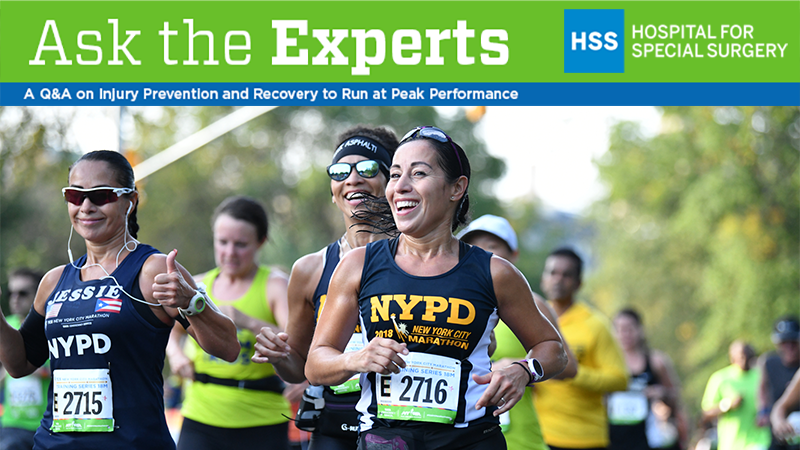Injury Prevention For First-Time Marathon Runners

This article originally appeared on Hospital for Special Surgery's blog, The PlayBook, on August 11, 2019.
Life is a great balancing act, as is training for your first marathon. It is important to maintain a state of balance between opposing forces involving load and recovery. During the training process, increased demand on the bone can cause it to remodel and become stronger in areas of higher stress. However, when repetitive load outweighs the body’s ability to remodel and strengthen, overuse injuries can occur. Poorly perfused tissues such as ligaments and tendons are also particularly susceptible to overuse injuries because they adapt more slowly. In a more dynamic sense, when experiencing fatigue, distance runners can develop altered gait patterns which can also change mechanical load and thus injury risk.
Intrinsic and extrinsic factors that can contribute to overuse injuries include:
- Dynamic biomechanics: Hip and core weakness can lead to biomechanical changes that may contribute to injury as above.
- Personal factors: Sex, age, genetics, static biomechanics, etc.
- Training patterns and volume: Some studies have found mileage greater than 40 miles per week to be a risk factor for lower-extremity overuse injuries in long distance runners.
- Health and lifestyle: This includes, nutrition, sleep, smoking habits, co-morbidities, BMI, and bone mineral density.
- History of prior overuse injury: Consistently found to be one of the greatest risk factors for recurrent injury.
Our study in 2017 involving 720 first-time marathon runners found that half experienced an injury that interfered with their training in some capacity. About 10% in each group experienced major injuries that prevented them from completing the marathon. 51 of these 64 total major injuries were secondary to overuse with 40% attributable to bone-stress etiologies.
If you’re looking to prevent injury while building endurance, consider the following:
- Increase your volume at an appropriate pace (a good rule of thumb is to not increase by more than 10% of your total volume per week).
- Address any strength deficits that may be contributed to fatigue-induced changes in biomechanics (pay particular attention to hip/butt/core strength).
- Mix in softer surfaces (such as a bridle path) and cross-training days to give your body a break.
- Ensure that your energy availability (nutrition) is aligned with what you are expending in your training.
- Avoid continuing to train in shoes that have seen more than 300 miles.
- Find training recipes that can be helpful in guiding you through your first marathon.
- Listen to your body!
 Dr. Kathryn McElheny is a primary care sports medicine physician at Hospital for Special Surgery (HSS). Dr. McElheny is committed to caring for athletes of all ages, levels and disciplines. In the context of her training and board certification in pediatrics, she is especially dedicated to managing injuries experienced by young athletes. In addition, she was a collegiate runner and is the non-operative medical director of the New York Mets with a particular passion for treating runners and baseball athletes.
Dr. Kathryn McElheny is a primary care sports medicine physician at Hospital for Special Surgery (HSS). Dr. McElheny is committed to caring for athletes of all ages, levels and disciplines. In the context of her training and board certification in pediatrics, she is especially dedicated to managing injuries experienced by young athletes. In addition, she was a collegiate runner and is the non-operative medical director of the New York Mets with a particular passion for treating runners and baseball athletes.


